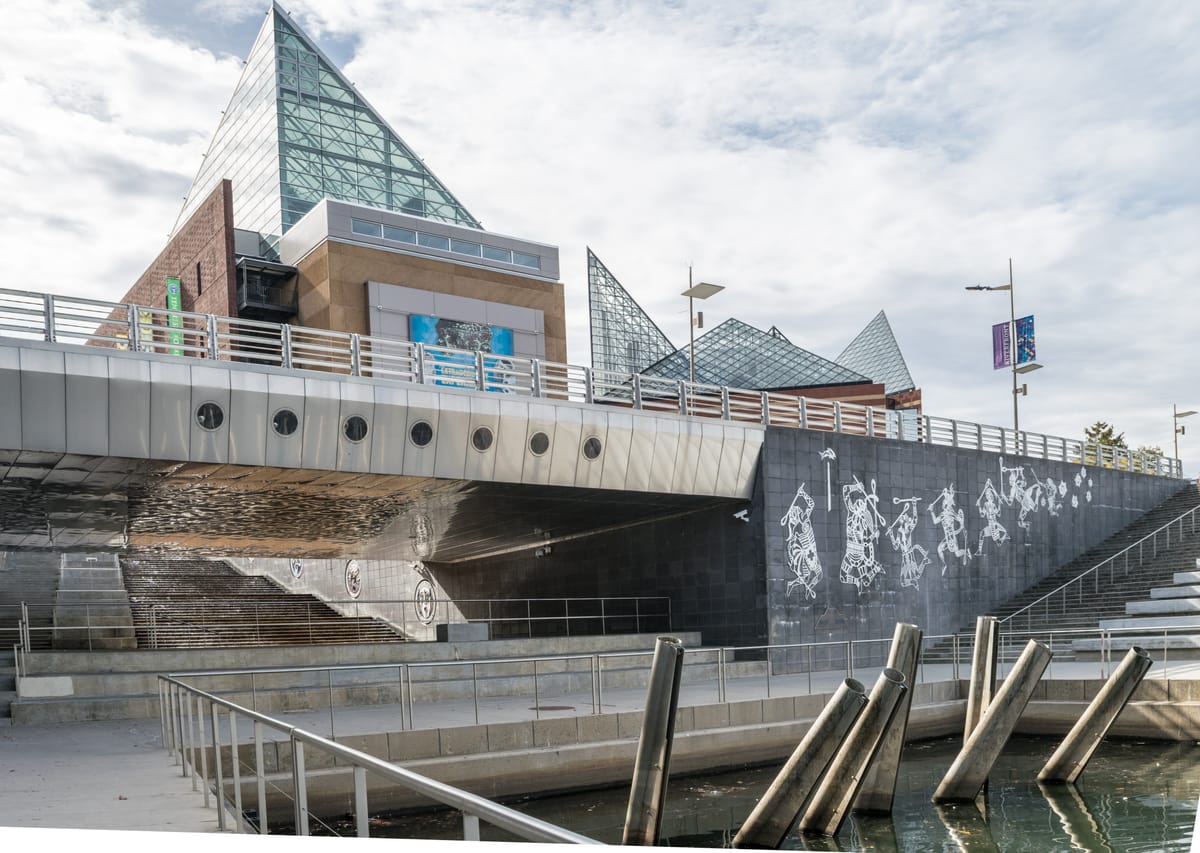Chattanooga: Lamentations at The Passage
Explore the poignant history of The Passage in Chattanooga, honoring Cherokee resilience along the Tennessee River amidst the Trail of Tears.

Five Day Road Trip in the Tennessee Valley – Huntsville to Chattanooga
Seventh Stop – The Passage
Water provided life and sustenance to peaceful tribal families on the Tennessee River’s edge. That same river carried them to unknown lands. Entering The Passage in Chattanooga is a surreal experience.
Chattanooga was one of the water routes of the Indian Removal Act of 1830. The Act led to a forced evacuation program for the Cherokee Indian tribe, when the tribes were moved to land west of the Mississippi River. The heartbreak of the Cherokee removal is honored in The Passage, a multi-dimensional community gathering place and outdoor art display near Ross’s Landing in Chattanooga, Tennessee.
Departing in Sorrow

I entered at the top of the multi-tiered stairs and concrete walkway. The flowing Tennessee River is visible below, but seems so far down the path. Like a teardrop, a small water drip appears in the concrete wall to my left. This tiniest trickle on the “weeping wall” gains momentum as it slides down the concrete block wall and joins with water coursing from flat panels in the same wall, creating a little stream.
Moving downstairs, the river below is more obvious, as is the wading pool’s large circular disc at the river’s edge. A child frolics in the wading pool with her jumping dog, both energized by the abundance in this water basin.
I begin the descent. The weight of history is enormous. Tears begin to gather as I imagine the grief of tragic loss and destruction by humans in the name of progress. Years of heritage and lifelong connections to the rivers, mountains, and forests of this region were ruptured.

These few hundred steps to the river below are likely along the same footpath of mothers and their children, hustled in large groups from a military detention camp to a canoe, barge or steamboat. Those exiled along the water route journeyed down the Tennessee River, from this location in Chattanooga to Muscle Shoals, Alabama.
The Journey
A railroad route then carried the refugees around the shoals to another boat for the journey to the Ohio River, then down the Mississippi River, to the mouth of the Arkansas River and onward by water and land to their final destination. While water travel seems simpler than the well-known pedestrian routes (in bitterly cold conditions along primitive paths), it was not.
An event of this magnitude, moving hundreds of people, required careful coordination of food, supplies, and other provisions. Water travel presented navigational issues such as sand bars and low water levels. Such diseases as cholera, dysentery, measles, smallpox and environmental exposures further complicated the journey. As did the rigorous stress of military guardianship.
I pause on a step…I move forward…I retreat into my thoughts…I move forward again.

Rippling waters flow down the concrete steps, shimmering in the sunlight, offering flashes of brightness to the somber experience. My tears form and subside with the cascading water – a place of pain – a place of survival.

Seven ceremonial discs adorn the concrete wall where the stream originated. These discs are modern art, with symbolism from a variety of cultural influences. Common themes are life, death and eternity. These discs and the related explanatory plaques bring a multi-dimensional context to the site.
Cautiously, I dip my foot into the flowing water. Gathering strength, I glide across the concrete step. The momentum of the tumbling waterfall elevates my personal awareness. In an instant, my despair disappears and my thoughts center on resilience.

The puppy barks. The child laughs. Families gather at the wading pool and climb to the trickling source of the water.
Find more about Gwyn’s journey through the Tennessee Valley at Small Towns, Big Stories on MilesGeek.




